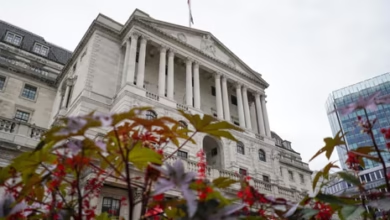Economic GrowthForex
Exploring the Euro’s Recent Performance and Future Outlook

Traders on Thursday kept the Euro on course for a strong comeback as prospects for the European Central Bank turning cautious after an expected second rate cut in September swept anxiety about French politics out of the currency’s path.
With global markets lined up for quick-fire U.S. rate cuts, the ECB signaled heightened concerns about volatile inflation, helping to sustain an upward shift for the euro that is near four-month highs after being shaken by French government turmoil in June.
The ECB left its deposit rate unchanged at 3.75% after lowering it from 4% in June for the first time in five years and president Christine Lagarde stressed it was not committed to a particular rate path. By contrast, Federal Reserve chief Jerome Powell on Monday said he felt more confident U.S. inflation truly had moderated.
That has helped, at least temporarily, to bolster the euro, boosting the currency more than 2% against the dollar so far this month after a roughly 1% drop in June. The euro was trading at around $1.093 on Thursday, down a touch on the day but still heading for its biggest monthly jump since November.
“Extreme scenarios around French political risk are abating and markets are convinced the Fed will be cutting rates soon and we’ve started to see softness for the dollar against most currencies,” said Lombard Odier macro strategist Bill Papadakis.
But the euro has slipped against the Swiss franc and sterling this month. And investors warned that the euro was not a straight bet should Donald Trump win U.S. presidential elections in November. Trump has proposed import tariffs that could hurt the euro zone economy, revive U.S. inflation and send U.S. rates and the dollar higher.
“We expect the euro zone-to U.S. interest rate differential to shrink which should lead to some dollar depreciation,” said Amelie Derambure, a multi-asset portfolio manager at Amundi. “But markets see a Trump victory as a dollar-bullish event and so until the election the depreciation will be limited.”
Currency comeback assured?
Money markets are pricing in more than two rate cuts from the Fed by year-end and just under two for the ECB. The dollar has stood tall over most of its rivals for most of the past year, but is seeing its crown slip as interest rate support fades. The index that measures the dollar against major peers is 2% lower in July so far.
The euro, meanwhile, has recovered from a fall in June, when it hit two-month lows against the dollar, as French President Emmanuel Macron’s snap parliamentary election created political instability at the heart of the euro zone and pulled France’s deep budget deficit into focus.
Prospects of euro zone members wrangling over a French fiscal emergency in June revived memories of past euro sovereign debt crises pulling the common currency project close to the brink of collapse.
That fear is fading, with the extra income yield traders demand to hold French 10-year bonds over their German equivalents now about 65 bps, after surging briefly in June to a 14-year high of 85 bps.
“Our view is that (the ECB) will cut in September and again in the fourth quarter, but they are in a slow rate cutting cycle,” said David Zahn, head of European fixed income at Franklin Templeton.
Slowdown Risks
Lagarde on Thursday hinted she was concerned about euro zone growth in the context of potential global trade wars.
Trump’s pledge to hike import tariffs was a serious risk for the currency bloc’s export-focused economy, Edmond de Rothschild Asset Management CIO Benjamin Melman said. “China is at the forefront because this has more political impact but Europe can also be an easy target,” he said.
Melman, who expects the ECB deposit rate to be no higher than 2.5% by end-2025, is positive on short-term government bonds, which benefit from rate cut expectations. Konstantin Veit, a portfolio manager at bond fund PIMCO, said he did not see big moves in the euro against the dollar from here. “They (ECB policymakers) are not in a mad rush.”
In Summary:
Traders are keeping a close eye on the Euro’s comeback, with the European Central Bank expected to make a second rate cut in September. The ECB’s concerns about inflation and the Fed’s stance on U.S. inflation have influenced the Euro’s recent performance.
Despite some fluctuations, the Euro has shown strength against the dollar this month, with market sentiment shifting due to various factors. While the Euro has gained ground against the dollar, uncertainties remain, particularly related to the upcoming U.S. presidential elections and potential economic impacts.



